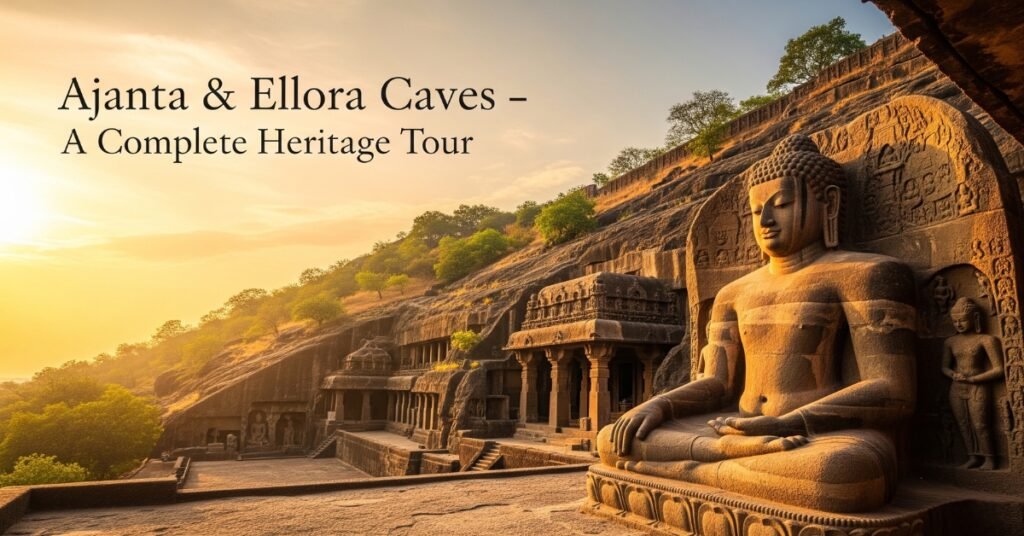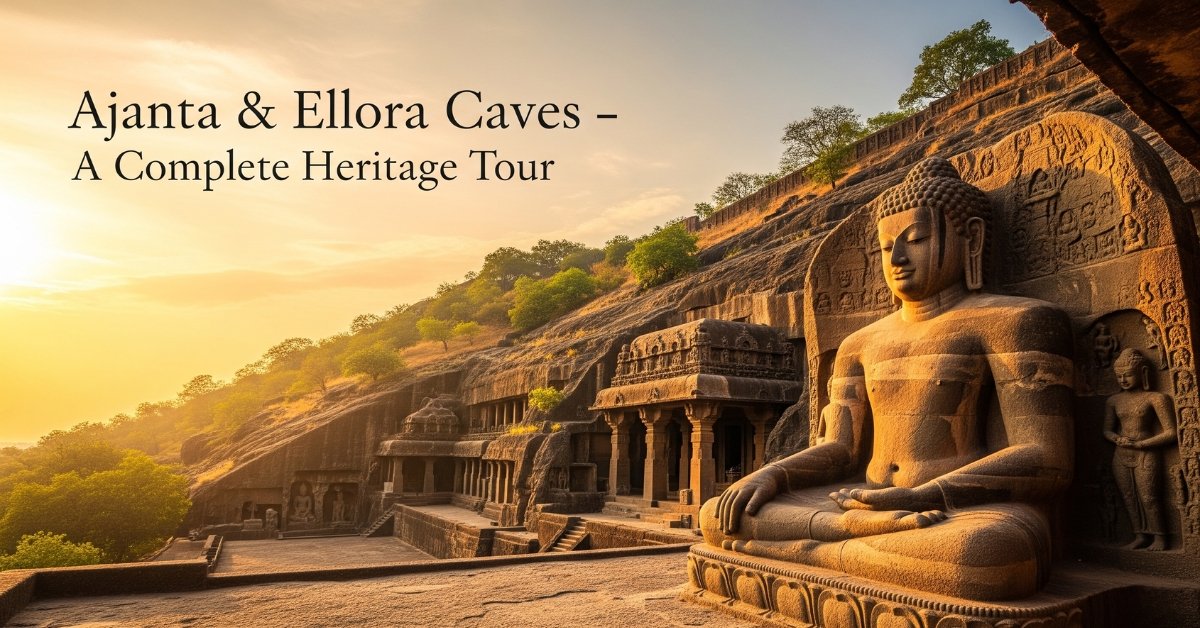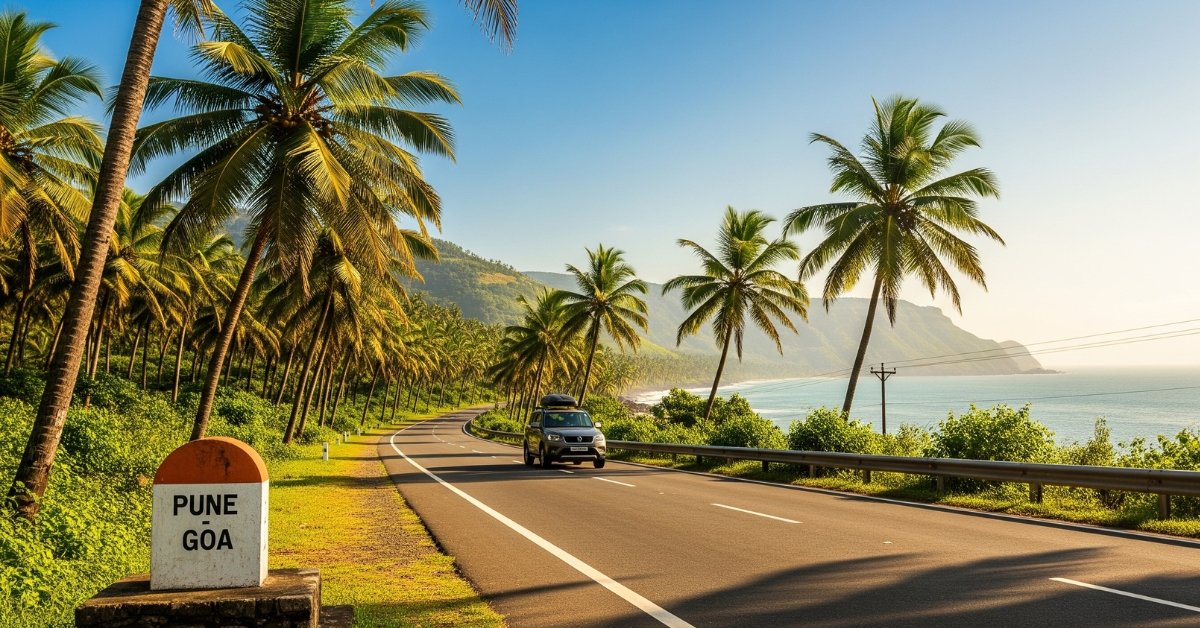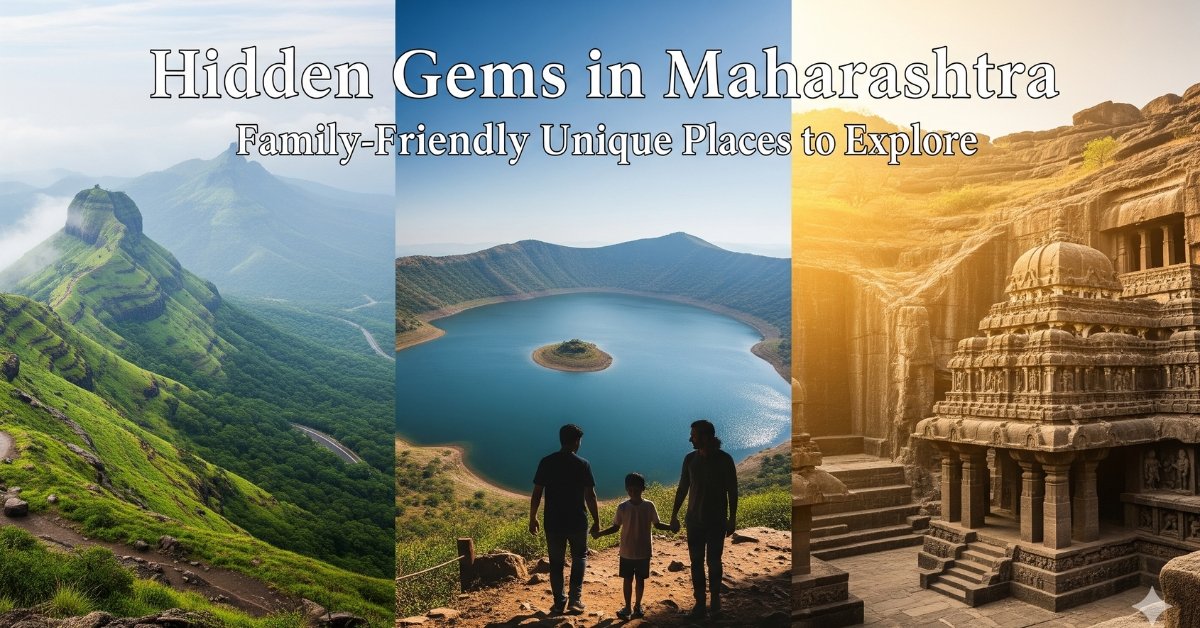Exploring the Ajanta and Ellora Caves: A Complete Heritage Tour
Step into a world where ancient artistry meets spiritual devotion, where every carved pillar tells a thousand-year-old story. The Ajanta and Ellora Caves in Maharashtra represent one of India’s most magnificent UNESCO World Heritage Sites, offering visitors an extraordinary journey through Buddhist, Hindu, and Jain architectural masterpieces that have captivated travelers for centuries.
Understanding the Twin Marvels
Ajanta Caves (2nd Century BCE – 6th Century CE): These 30 rock-cut Buddhist cave monuments showcase exquisite paintings and sculptures depicting the life of Buddha and various Jataka tales. Carved entirely from volcanic rock, Ajanta represents the pinnacle of ancient Indian artistry.
Ellora Caves (6th – 10th Century CE): A testament to religious harmony, these 34 caves represent three major religions – 12 Buddhist caves, 17 Hindu caves, and 5 Jain caves. The crown jewel, Kailasa Temple (Cave 16), stands as the world’s largest single monolithic rock excavation.
Must-See Caves at Ajanta
Cave 1: Famous for the stunning Bodhisattva Padmapani painting, this monastery cave showcases intricate ceiling designs and detailed murals depicting celestial beings and royal courts.
Cave 2: Known for its elaborate pillared hall and beautiful paintings of Buddha’s birth stories. The ceiling decorations here are among the most sophisticated examples of ancient Indian art.
Cave 16: The largest monastery at Ajanta, featuring the famous “Dying Princess” painting and remarkable architectural elements including a spacious courtyard.
Cave 19: A chaitya hall with a magnificent facade decorated with carved Buddha figures and intricate geometric patterns that demonstrate advanced engineering skills.
Essential Ellora Cave Experiences
Kailasa Temple (Cave 16): This architectural wonder required the removal of 400,000 tons of rock and took over 150 years to complete. The temple represents Mount Kailash, Shiva’s celestial abode, with intricate carvings depicting scenes from Ramayana and Mahabharata.
Cave 12 (Tin Thal): A three-story Buddhist monastery showcasing the evolution of Buddhist architecture and featuring beautiful sculptures of Buddha and Bodhisattvas.
Cave 32 (Indra Sabha): The most ornate Jain cave, featuring detailed carvings of Jain Tirthankaras and magnificent architectural elements including a beautiful carved elephant.
Dhumar Lena (Cave 29): A stunning example of early cave architecture with a waterfall cascading nearby during monsoon season.
Planning Your Heritage Tour
Best Time to Visit: October to March offers pleasant weather ideal for exploration. Avoid summer months (April-June) due to extreme heat. Monsoon season (July-September) brings lush greenery but can affect accessibility.
Duration: Dedicate minimum two days – one full day each for Ajanta and Ellora. Photography enthusiasts and history buffs should consider three days for a comprehensive experience.
Base Location: Aurangabad serves as the perfect base, located 107 km from Ajanta and 30 km from Ellora. The city offers excellent accommodation options ranging from budget hotels to luxury resorts.
Practical Heritage Tour Tips
Entry Fees and Timings: Ajanta Caves are open Tuesday to Sunday (9 AM – 5:30 PM), closed on Mondays. Ellora Caves operate Wednesday to Monday (6 AM – 6 PM), closed on Tuesdays. Entry fees: ₹40 for Indians, ₹600 for foreigners.
Photography Guidelines: Photography inside caves requires additional tickets (₹25 per cave). Flash photography and videography are strictly prohibited to preserve ancient paintings.
What to Carry: Comfortable walking shoes, water bottles, hat or cap, and a small flashlight for better cave exploration. Guided tours are highly recommended for understanding historical context.
Transportation and Accessibility
From Major Cities: Aurangabad is well-connected by air, rail, and road. Direct flights from Mumbai, Delhi, and Pune. Train connectivity from major Indian cities via Aurangabad railway station.
Local Transport: Hire private vehicles or join organized tours. MSRTC buses operate regular services to both cave complexes. Auto-rickshaws and taxis are available for flexible scheduling.
Cultural Significance and Conservation
These caves represent 1,500 years of continuous artistic and religious evolution. The paintings at Ajanta demonstrate sophisticated techniques including the use of natural pigments that have survived centuries. Ellora showcases remarkable religious tolerance, with Buddhist, Hindu, and Jain caves coexisting harmoniously.
Conservation efforts by Archaeological Survey of India ensure these treasures remain protected while accessible to visitors. Strict visitor capacity limits help preserve the delicate ecosystem within the caves.
Beyond the Caves
Combine your heritage tour with visits to Aurangabad’s other attractions including Bibi Ka Maqbara (Mini Taj Mahal), Daulatabad Fort, and Grishneshwar Temple. Local markets offer traditional Paithani sarees and Himroo textiles as memorable souvenirs.
Ready to Explore Ancient Wonders?
The Ajanta and Ellora Caves offer more than just sightseeing – they provide a transformative journey through India’s artistic and spiritual heritage. Every carved stone whispers stories of devotion, creativity, and cultural synthesis that shaped our civilization. For a comfortable journey to these magnificent sites, consider booking an Ertiga car on rent in Pune for your heritage expedition.





